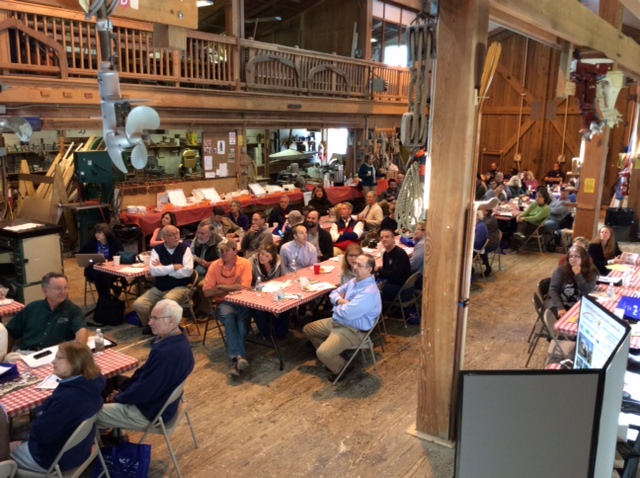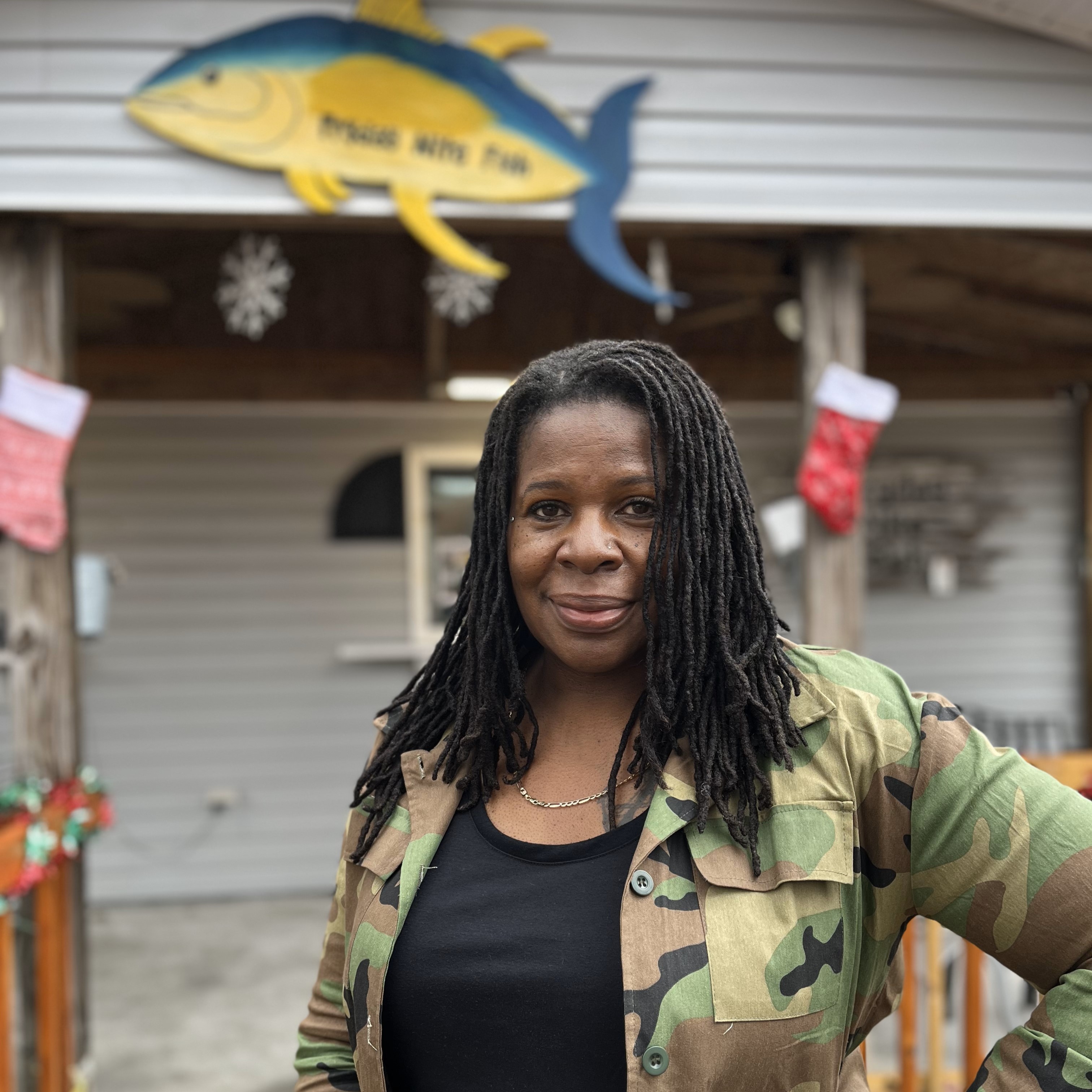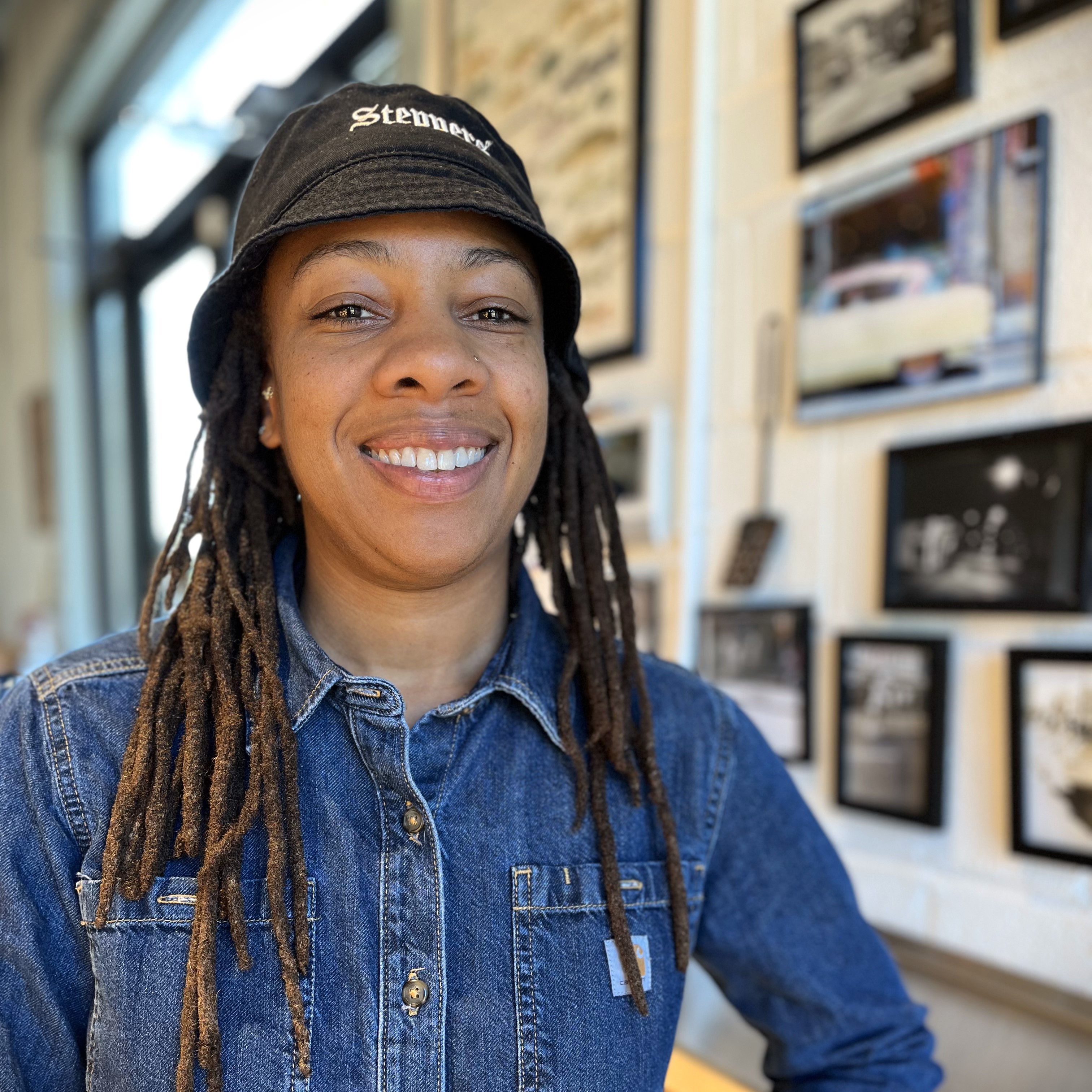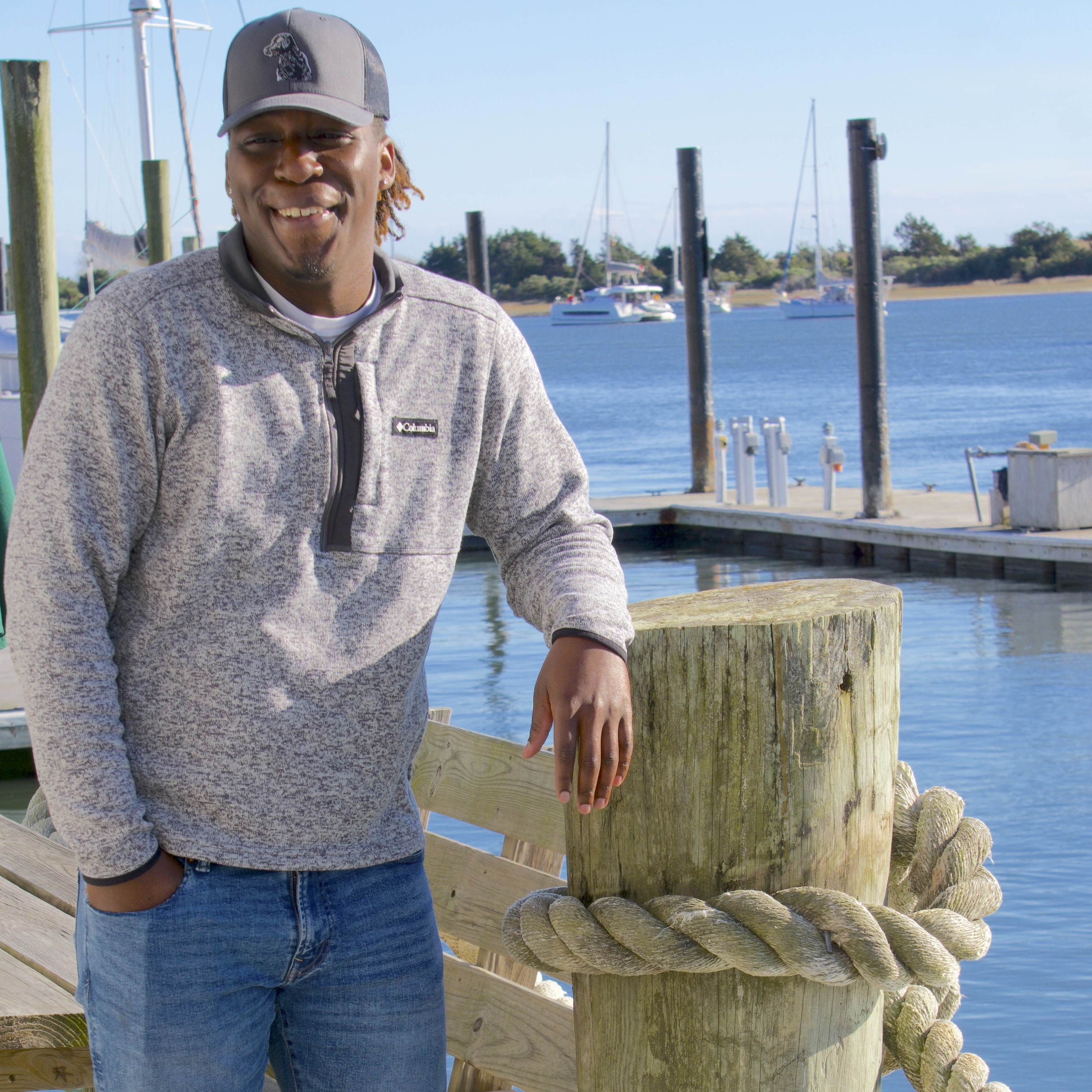Annual Catch Summit Docks in Beaufort

From The Carteret County News-Times
Wild, locally caught seafood may become a niche market, or it may already be one. But whatever its future, seafood industry stakeholders and state officials both see opportunities to keep the wild-caught seafood on the menu for future generations.
NC Catch, a nonprofit dedicated to partnering with local catch groups, including Carteret Catch, to strengthen the state seafood economy through promotion and education, held its fifth summit this year Monday and Tuesday at the Core Sound Waterfowl and Heritage Museum on Harkers Island and at the N.C. Maritime Museum in Beaufort. The catch partnership had a variety of guest speakers to speak about the state of the North Carolina seafood industry, as well as success stories and advice on how to better promote and support locally harvested seafood.
Dr. Donald van der Vaart, secretary of the N.C. Department of Environmental Quality, attended the summit’s celebratory dinner at the Core Sound Museum Monday. Dr. van der Vaart said supporting local seafood is an initiative that’s taken off in North Carolina.
“It’s clearly a niche market now,” he said, “and with the coastal tourism we have, it goes well together.”
Dr. van der Vaart said there’s a balance that needs to be found between supporting the future of wild-caught seafood and regulating the fisheries. The N.C. Division of Marine Fisheries, a part of the DEQ, enforces coastal fishing regulations, which are created by the N.C. Marine Fisheries Commission, another part of the DEQ.
“We need science to make that decision,” Dr. van der Vaart said, meaning the decision of what is the best balance of support and regulation. “The two can live together.”
While addressing the crowd at Monday’s dinner, Dr. van der Vaart talked about how Gov. Pat McCrory charged him as DEQ secretary to balance economic development and quality of life.
“That’s a lot more complicated than it sounds,” Dr. van der Vaart said, “but we live in a country where we can be concerned with the public interest.”
Dr. van der Vaart took the time to address a recent controversial issue, the southern flounder supplement created by the MFC to reduce southern flounder landings. He said that people have claimed for over 20 years that the flounder stock was being overfished and nothing was being done to protect it.
“I don’t believe this is the end of the issue,” Dr. van der Vaart said. “We need more science, a stock assessment to base an amendment on. But I think this supplement is a good idea.”
NC Catch president Jim Johnson said he too thinks wild-caught seafood’s future is primarily a niche market, although he said he thinks its still in the process of becoming one.
“People are going to learn the better the product when it gets to shore, the more people will pay,” Mr. Johnson said. “We’re not going to see a great expanse of wild-caught seafood, but there will be a market for it, and we’re going to help fishermen and communities as much as possible.”
Mr. Johnson said a certain amount of tension between commercial fishermen and fisheries managers is inevitable. However, he said if the managers could do more to explain their reasons for creating regulations, it would likely ease some of the tension.
During the main summit on Tuesday, Dr. Jane Harrison, N.C. Sea Grant coastal economic specialist, spoke about the direction the local seafood industry has gone over the years and areas where it could grow in the future. She said that according to a study from the DMF, commercial seafood landings have dropped from a high point of 450 million pounds in 1981 to a low of 50-60 million pounds in 2011.
However, Dr. Harrison said landings values have risen over time, as well. According to the DMF website portal.ncdenr.org/web/mf/statistics/comstat, records show that the earliest recorded landings value, from 1972, was $11,798,839, while the most recent available landings value, from 2014, is $94,027,307.
Dr. Harrison said the top commercial seafood species in North Carolina include blue crabs, brown shrimp, summer flounder and southern flounder.
“We have an abundance in the number of species being harvested,” she said. “We’re No. 2 in recreational (fishing) industry jobs in the country and No. 15 in commercial (fishing) jobs.”
On the state level, Dr. Harrison said the DMF reported in 2014 there were 1,106 commercial fishing license holders in the Albemarle-Pamlico Sound area alone. Issues of concern voiced by fishermen in this report included the inability to predict the future of the industry, seafood prices, weather and keeping up with regulations.
“My assumption is these issues are similar across the state,” Dr. Harrison said.
Another study, performed in 2013 by the N.C. Rural Economic Development Center, showed there’s a problem with the supply chain for North Carolina seafood, namely lost fish houses to accept and process landings.
“We’ve seen a rapid decline in fish houses,” Dr. Harrison said, “but that decline has leveled off. That’s something to consider as an opportunity, a need.”
Opportunities Dr. Harrison saw for the future of wild-caught seafood included developing markets for under-utilized species, increasing processing capabilities in the state and investigating marine aquaculture.
Several North Carolina chefs, restaurant owners and fishermen spoke about their experiences selling and using local seafood at the summit. Wes Stepp, head chef of the Red Sky Café in Duck, said there’s a lot of awareness growing among consumers about local seafood.
“People want to eat local, healthy food,” he said. “It may be a bit more expensive, but people generally don’t mind pay a bit extra (for the quality).”
To help promote the seafood, Mr. Stepp said he’s created videos posted on the Internet where he’s visited fish houses to see the seafood being landed.
“It takes a bit more effort, but the customer appreciates it,” he said.
Sandy Howard, owner and operator of Amos Mosquitos in Atlantic Beach, said for the last six to seven years, all the seafood they’ve served has been domestic.
“Domestic seafood has a much better quality,” he said. “We’re not cheap, but we charge those prices to serve quality.”
At the fish houses themselves, opening up to educational tours has proven helpful. Alton Balance with the N.C. Center for the Advancement of Teaching talked about the success the center had keeping the Ocracoke Fish Company from having to close down the last working waterfront on Ocracoke Island, largely accomplished by bringing tour groups of students, teachers and other visitors to the company.
Other success stories from the industry included Randy Swanson with the Icehouse Waterfront Restaurant in Swansboro, Fabian Botta with the Ruddy Duck Tavern in Morehead City and Mark Hooper with Hooper Family Seafood in Smyrna.
Mr. Swanson said local seafood has become the biggest section of his menu, and he’s seen other restaurants in the Swansboro area follow his example.
“I see this as a great thing because it makes Swansboro a destination and brings in customers for everyone,” he said.
Mr. Botta, who’s a commercial fisherman himself, said he’s found serving the local seafood that’s in-season has allowed him to serve fresh seafood. He also said proper handling, freezing the fish promptly on the boat, has ensured the fish last longer to address the challenge of providing certain menu items year-round.
“There’s no such thing as cheap seafood,” Mr. Botta said. “There’s nothing better than to serve a good quality product to my customers.”
Mr. Hooper’s seafood company, meanwhile, is involved in Walking Fish, a community-supported fishery where customers buy shares in the fishery and receive deliveries of local seafood. Mr. Hooper said they currently have about 300 shareholders in the Raleigh area and 40 in the Durham area.
“With this, we have a direct connection (to the consumer),” Mr. Hooper said. “I like to think of it as a fishery-supported community.”
Contact Mike Shutak at 252-726-7081 ext. 206, email mike@thenewstimes.com; or follow on Twitter at @mikesccnt.





